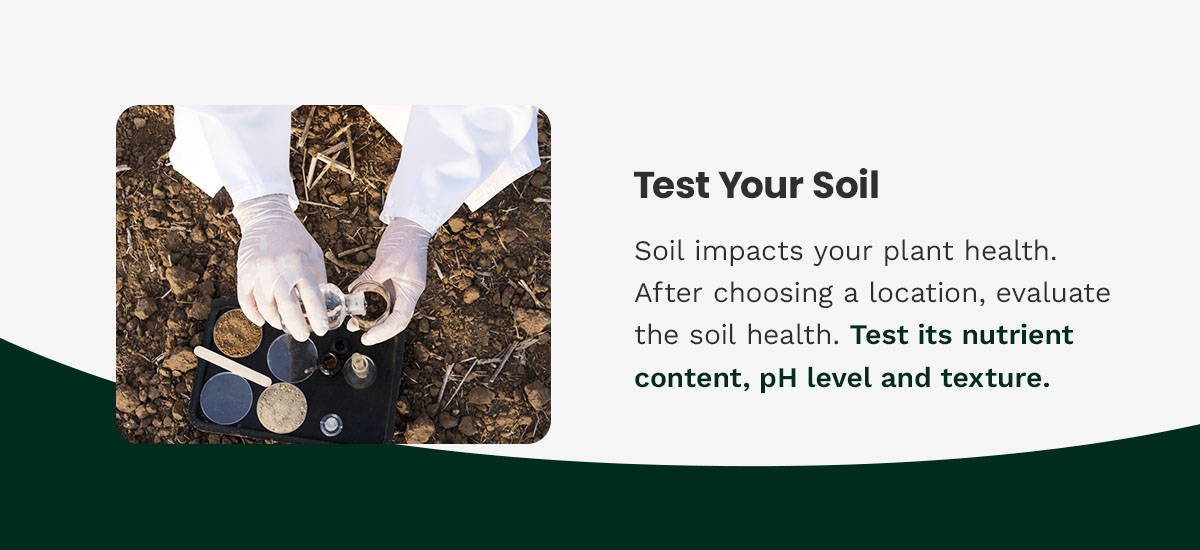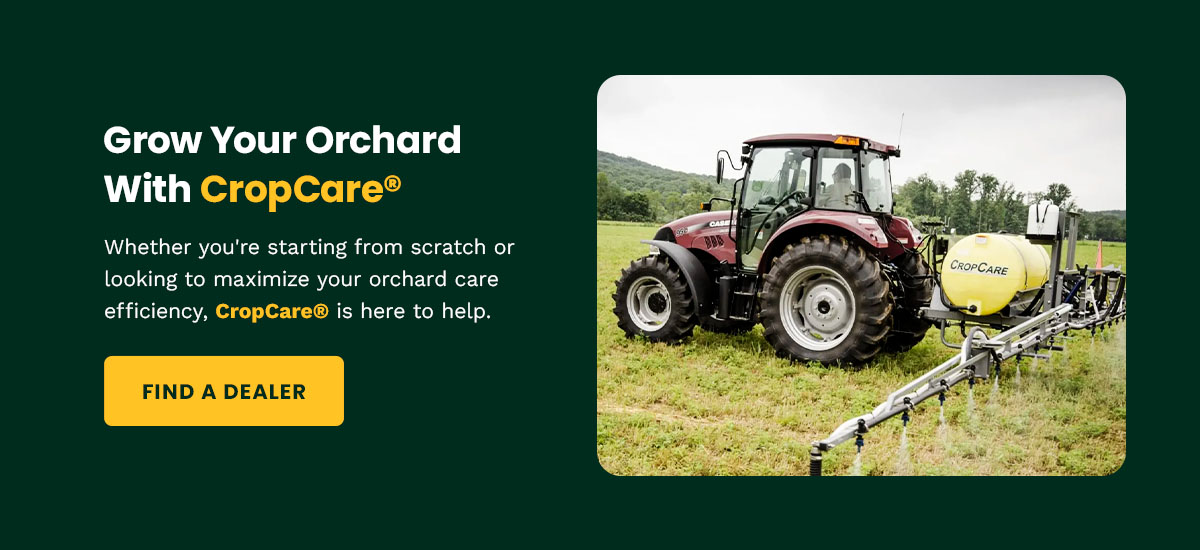
Growing fresh fruit is an excellent way to eat healthier, increase self-sufficiency and spend more time outside. Whether you want to grow fruit to sell or use at home, an orchard can expand your opportunities.
From finding the right planting spot to giving your crops the optimal growing conditions, research will help you succeed. Here’s a guide to help you hit the ground running.
How to Start an Orchard
An orchard is a significant investment. It requires ample time, planning and resources, but the eventual outcome is worth it. To simplify the journey as much as possible, here’s a step-by-step approach to starting an orchard:
1. Create a Detailed Plan
A lasting orchard starts with thorough preparation. Having an idea of what you want will streamline the rest of the process, saving you money, time and stress. Ask yourself:
- What fruit am I growing?
- Does the fruit grow on trees, bushes or another plant?
- What is the hardiness zone?
- What pests are in the area?
- How much sun and space do my plants need?
- Are the plants perennial or annual?
Your climate and local ecosystem will affect what you grow and how successfully it grows. Ensure you have a solid plan before starting your orchard to ensure a smooth process.
2. Invest in the Proper Equipment
You need the right tools to start an orchard. Good equipment makes constructing your orchard much easier — you can efficiently handle large or repetitive tasks, streamlining the process. Here’s some equipment you might need:
- Planting tools: Use shovels and augers to dig holes and set trees.
- Protective gear: Orchards often have bugs, thorns and lots of sun exposure. Use hats, sunscreen, gloves, sturdy shoes and insect repellant to protect yourself.
- Harvesting equipment: Fruit-picking baskets, ladders, bowls and bags all make harvesting fruit easier.
- Irrigation system: Use an irrigation system during dry periods. Soaker hoses, drip irrigation lines and micro-sprinklers give your trees constant moisture.
- Storage and handling tools: Use trays, bins and crates to collect and transport your harvested fruit. If you’re storing fruit for later, invest in storage facilities to keep everything fresh.
- Pruning equipment: Loppers, pruning saws and pole pruners are excellent tools for keeping your trees pruned and healthy.
- Sprayers: You’ll need sprayers if you’re using fungicides, pesticides or foliar nutrients. Use backpack- or tractor-mounted sprayers to maintain and protect tree health.
- Soil testing kit: Soil probes, pH meters and nutrient testing kits help monitor soil conditions for your fruit. Good soil management encourages healthy, productive growth.
If you’re running a bigger orchard, you’ll need larger equipment. The more trees you have to get through, the longer your work will take. Investing in high-quality equipment will keep your trees healthy while making your operation safer and more efficient.
3. Choose an Optimal Location
Location is where all of your growing efforts start. A prime orchard location increases the chance of successful growth. Look for locations with lots of land and sunlight. Fruit trees need at least six to eight hours of sun per day. Some crops, like apples, need at least eight hours during peak growing season.
Examine your potential location’s soil for good drainage. Poor drainage causes water pooling around your crop’s roots, leading to rot. Well-draining soil is key, but pair it with access to irrigation water in case you need to supplement dry spells. Additionally, research your area’s microclimate. What’s the wind exposure like? Are there frost pockets? These factors can affect your plant health and quality.
Finally, consider site maintenance. While one location might be perfect for growing fruit, it could be hard to access. The more difficult it is to access, the more demanding and time-consuming maintenance and harvesting will be. Make sure you can handle the location’s demands before picking your spot.
4. Test Your Soil
Soil impacts your plant health. After choosing a location, evaluate the soil health. Test its nutrient content, pH level and texture. Many fruit trees prefer slightly acidic soil conditions.
If your soil isn’t quite right, you’ll need to amend it for nutrient deficiencies. Use compost and manure to improve soil structure. For changing pH levels, try lime to raise the pH and sulfur to lower it. Preparing your soil early will boost your fruit growth.
5. Choose Your Variety Wisely
While you should already know what fruit you want to grow, you also need to pick a fruit variety for your orchard. Research fruit trees that fit your climate, growing conditions and soil.
Some varieties are more resistant to disease and pests, while others need heavier chemical interventions. Is there a market demand for a specific variety right now? Find a variety that fits your needs — fruits suited to your conditions will grow more easily, reducing your costs and labor.
Chill hours are another important consideration when picking fruit variety. Fruit trees need a certain number of cold dormant hours to trigger their bloom and fruit. You’ll need to keep your orchard below 45 degrees Fahrenheit for the correct number of dormant hours and consistent fruit production.
6. Determine Your Layout
Plants need room to grow, so you’ll need to plan your orchard’s layout and spacing. Good planning will maximize your airflow, plant accessibility and sunlight exposure, improving your harvest. Consider plant size at maturity, site topography and spacing requirements when planning your layout.
Make sure each row and plant has enough room for growing, pruning, harvesting and spraying. If you’re in the Northern Hemisphere, orient your rows North to South — this maximizes sunlight exposure for your plants while they grow.
7. Begin Planting
Once you’ve selected your fruit varieties, planned your layout and prepared your soil, it’s time to plant. Head to a nursery to pick up your fruit trees. Choose plants from high-quality nurseries to ensure your stock is disease-free and ready to go. Container-grown trees are more expensive than bare-root, but they’re easier to handle and plant since they dry out slowly.
Follow these steps to start planting:
- Soak your bare-root trees in water for several hours to reduce transplant shock, or water your container-grown trees.
- Dig holes that will accommodate roots without crowding them.
- Set the trees at the same depth they grew at in the nursery.
- Backfill the holes with soil.
- Firm the soil gently to remove air pockets.
- Water the trees to settle the soil and hydrate the roots.
Grow Your Orchard With CropCare®
Whether you’re starting from scratch or looking to maximize your orchard care efficiency, CropCare® is here to help. With over 70 years of experience, we can provide you with industry-leading equipment and support. Whether 3PT sprayers, trailer sprayers, farm and lawn sprayers or specialty vegetable equipment, our range of products will hold up against heavy work with ease.
CropCare® is committed to providing you with durable, reliable equipment and expert customer service. Explore our products online or find a dealer near you to experience the CropCare® difference firsthand!



